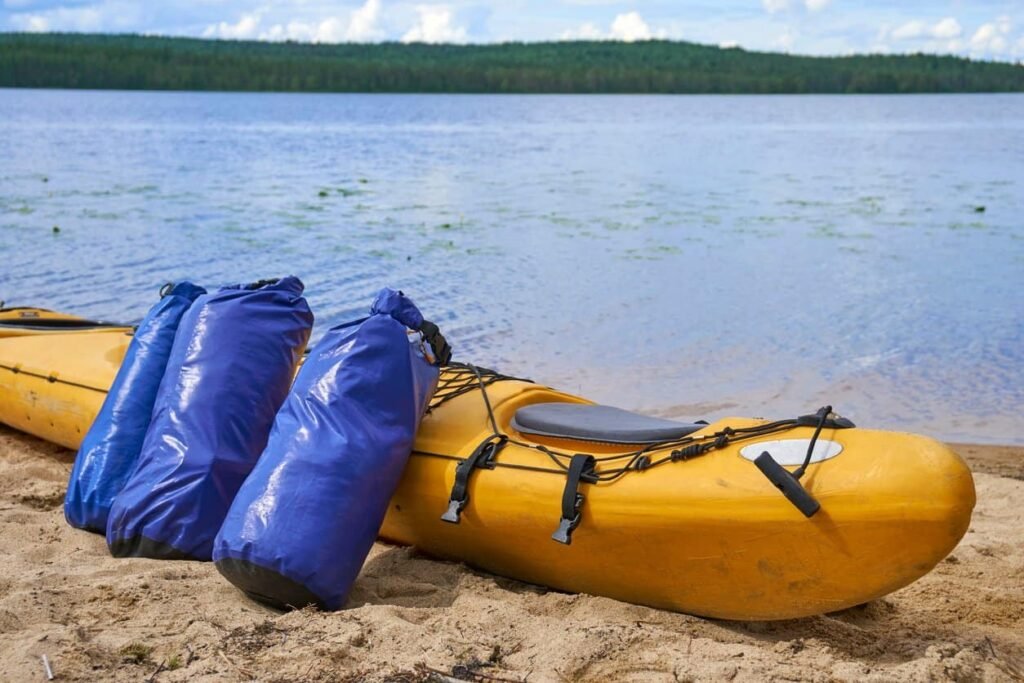
Dry bags are known for keeping items dry, but can they effectively contain water within? Let’s explore their water containment abilities.Dry bags are designed primarily to keep water out, but their waterproof materials and sealing mechanisms can also effectively contain water inside under certain conditions.Discover the versatile uses of dry bags in water containment and the factors that influence their effectiveness.
Design and Material of Dry Bags
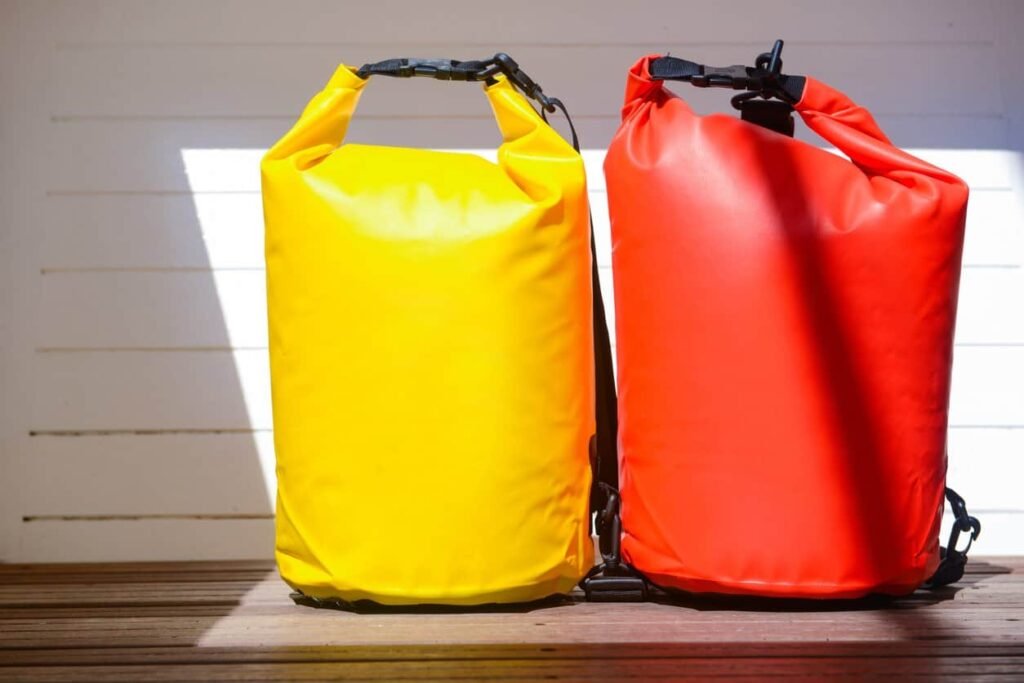
The Role of Material in Waterproofing
When it comes to dry bags, the choice of material is not just about aesthetics; it’s about functionality. The most common materials used in dry bags are PVC (Polyvinyl Chloride), TPU (Thermoplastic Polyurethane), and Nylon with waterproof coatings. PVC, known for its robustness, makes the bag tough against abrasions, making it ideal for rugged outdoor use. Each material brings its own set of waterproofing characteristics, impacting the bag’s ability to keep water out (or in) effectively.
Evaluating Material Strength and Longevity
Durability is a pivotal factor in the design of dry bags. The wear-and-tear a dry bag can withstand is largely dependent on its material. It’s crucial to assess the nature of your activities to choose a bag with the right durability factor. The thickness of the material, often measured in deniers, also plays a significant role in how long your dry bag will last.
Material Flexibility and User Experience
The usability of a dry bag is greatly influenced by its flexibility. Stiffer materials like heavy PVC might offer more protection but can be cumbersome to carry and pack. TPU strikes a balance, offering a degree of flexibility without sacrificing protection, making it easier to roll up and store the bag. The flexibility of a material also affects how tightly the bag can be sealed – a crucial factor in ensuring its waterproof effectiveness.
How Materials React to Different Environments
Material reaction to environmental conditions is a critical aspect of dry bag design. Some materials may degrade under UV exposure, while others could be affected by saltwater or extreme temperatures. For instance, UV-resistant materials are essential for bags used in sunny, open environments. Similarly, bags used in marine environments should be made of saltwater-resistant materials to prevent the material from breaking down over time.
Forward-Thinking Material Technologies
The future of dry bag materials looks promising, with ongoing innovations aimed at enhancing their waterproofing capabilities and environmental sustainability. Developments in eco-friendly materials that offer high waterproofing efficiency are on the rise. These advancements are not just about keeping your gear dry; they’re about doing so in a way that’s kinder to the planet. Future trends might include self-healing materials that can repair minor punctures, or materials that change properties based on environmental conditions, offering adaptive waterproofing solutions.
Sealing Efficiency
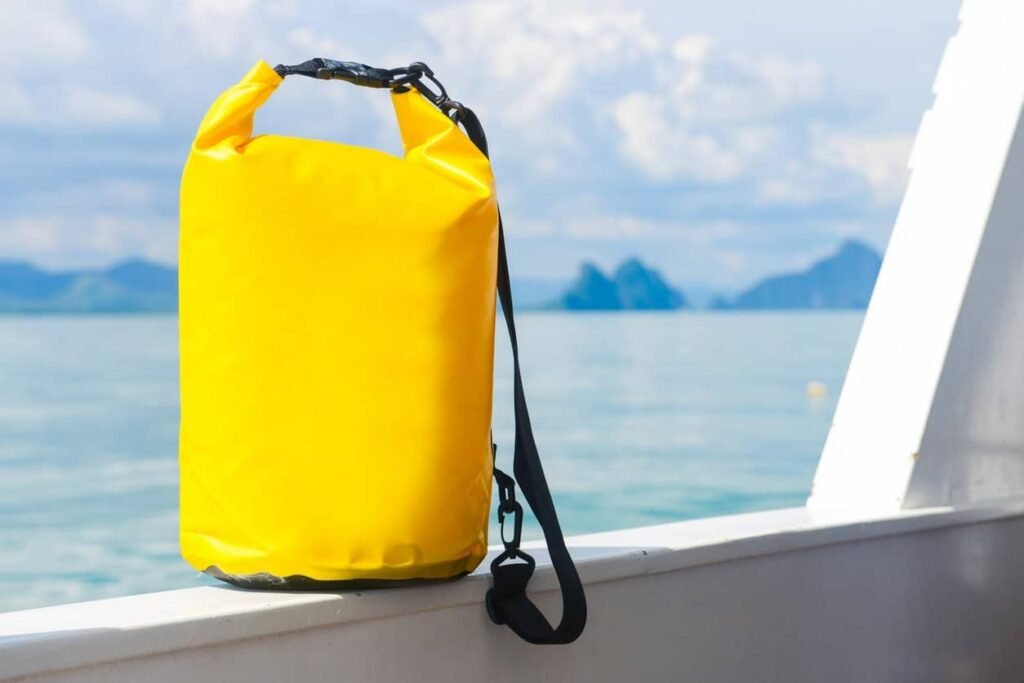
Roll-Top Closure Mechanism: Ensuring a Watertight Seal
The roll-top closure is a hallmark of dry bag design, offering a reliable sealing method. By folding the top edge over itself several times, it creates a barrier against water ingress. This technique, when executed properly, forms an air-tight seal that not only prevents water entry but also helps the bag to float if dropped in water. For further information on how the roll-top closure works, REI’s guide on dry bags offers detailed insights.
Zipper Seal Systems: Advanced Water Protection
Some high-end dry bags incorporate zipper seals, similar to those found in diving suits. These zippers are designed to offer a higher level of waterproofing, suitable for submersion. For more details on zipper seal systems, OutdoorGearLab provides a comprehensive comparison and review of different dry bag models.
Material Overlap and Welding: Enhanced Durability
The efficiency of a dry bag’s seal also depends on how the material overlaps at the seams. High-frequency welding is commonly used to fuse the bag’s material together, ensuring no needle holes are present, which could allow water entry. This technique also adds to the overall strength of the bag. A detailed explanation of material welding can be found on Watersports Magazine.
Double Sealing for Extra Security
For activities involving prolonged submersion, like kayaking or rafting, some dry bags offer a double sealing feature. This includes an additional fold at the top or an inner seal for extra protection. Websites like Paddling Magazine often review dry bags with these features, providing real-world testing insights.
Seal Integrity Testing: Ensuring Quality
Manufacturers often perform rigorous testing to ensure the sealing mechanisms of dry bags hold up under different conditions. This might include both laboratory and field tests. Resources like GearLab often conduct independent reviews and tests on these products, providing valuable information on their sealing efficiency.
User Practices: Maximizing Sealing Efficiency
The effectiveness of a dry bag’s seal also heavily depends on proper use by the user. This includes correctly folding the roll-top closure, avoiding overfilling the bag, and regular checks for damage or wear. Educational resources and tutorials, such as those available on REI’s Expert Advice, offer practical tips on maximizing the sealing efficiency of dry bags.
Versatility in Usage
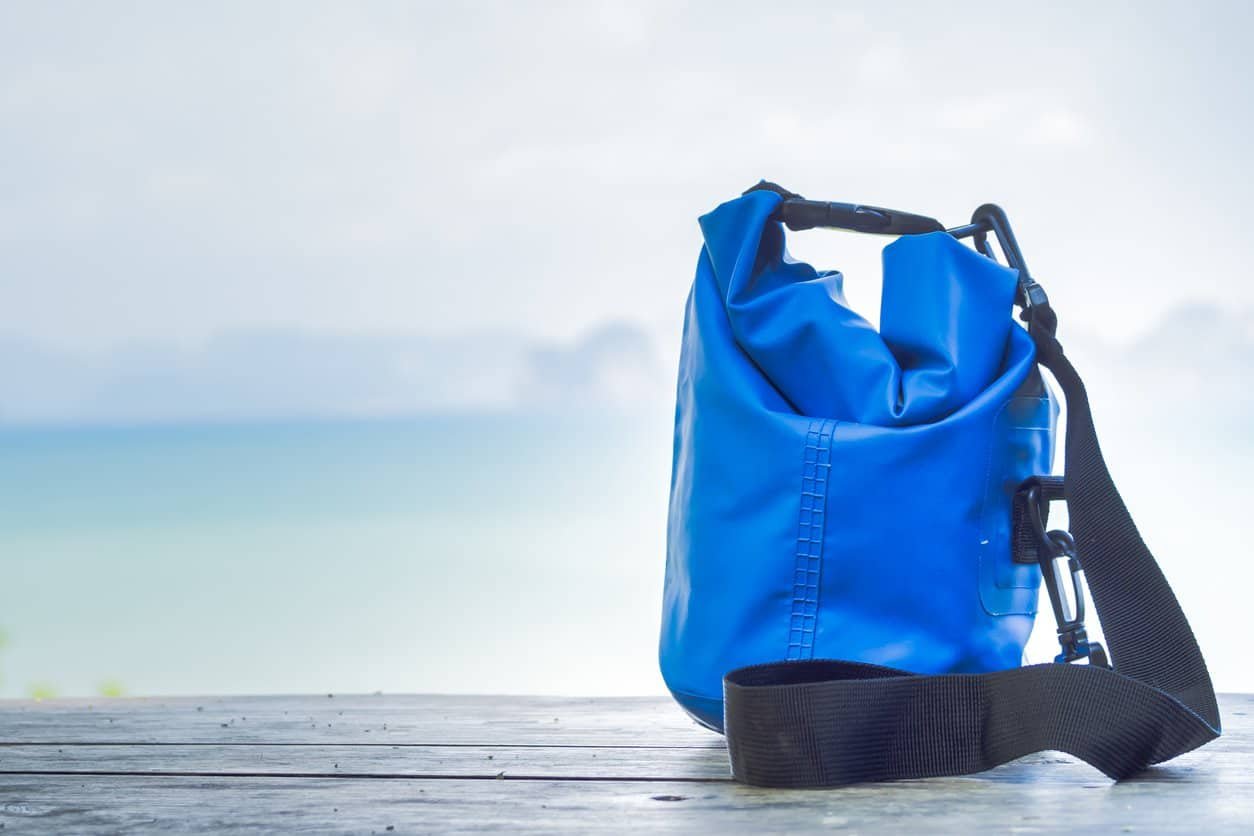
Multi-Sport Adaptability
Dry bags are not just limited to kayaking or boating. They provide reliable protection for your belongings, whether you’re navigating calm lakes or tackling white-water rapids. For more detailed insights on multi-sport usage of dry bags, OutdoorGearLab offers a comprehensive review of their application in various water sports.
Hiking and Camping Applications
Beyond water sports, dry bags are increasingly popular in hiking and camping adventures. Their lightweight design and waterproof features make them ideal for protecting electronics, clothes, and food from the elements during long hikes or overnight camping trips. To explore the best dry bags for hiking and camping, REI Co-op provides a selection guide and user reviews.
Urban and Daily Use
The practicality of dry bags extends into daily life, especially for commuters in rainy cities or for individuals needing a robust, waterproof bag for the gym or pool. Many modern designs incorporate stylish elements, making them suitable for urban use while still offering the rugged durability expected of outdoor gear. For recommendations on stylish yet functional dry bags for daily use, check out GearJunkie’s review.
Emergency Preparedness
In emergency situations, such as during floods or heavy storms, dry bags can play a crucial role. They can protect vital documents, electronics, and emergency supplies from water damage.For guidelines on choosing dry bags for emergency preparedness, Ready.gov provides valuable resources and checklists.
Limitations and Considerations
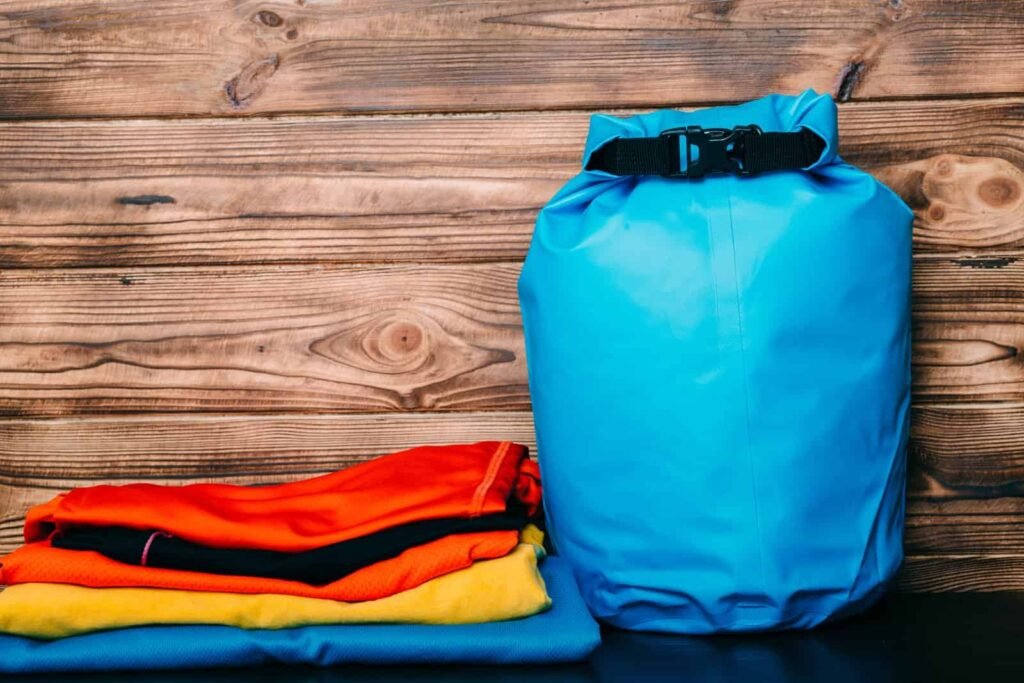
Not Suitable for Extended Submersion
Dry bags are designed to protect contents from brief submersions or splashes, but they are not ideal for prolonged underwater exposure. The sealing mechanisms, while effective against temporary water contact, may fail under constant pressure or extended submersion, potentially allowing water to seep in. It’s important to differentiate between water-resistant and waterproof capabilities in these products. For further reading on the distinction and best practices, Outdoor Gear Lab provides an insightful guide on the subject at Outdoor Gear Lab – Waterproof vs. Water-Resistant.
Vulnerability to Wear and Tear
Regular use and exposure to harsh conditions can cause wear and tear on dry bags, affecting their waterproof integrity. Materials like PVC or TPU, commonly used in dry bags, are durable but can be susceptible to punctures, abrasions, or UV damage over time. It’s essential to periodically inspect a dry bag for any signs of damage that could compromise its effectiveness. Users should follow the manufacturer’s guidelines for maintenance and care to ensure longevity. REI Co-op Journal offers valuable tips on maintaining outdoor gear, applicable to dry bags, at REI Co-op Journal – Gear Maintenance.
Size and Accessibility Limitations
Dry bags come in various sizes, but larger sizes can be cumbersome and difficult to carry, especially when fully loaded. Additionally, the roll-top design, while effective for sealing, can limit quick access to items inside the bag. Organizing contents can also be a challenge, as most dry bags offer a single compartment without pockets or separators. This can be inconvenient for activities where quick access to certain items is needed. It’s advisable to plan and pack accordingly, considering what items need to be readily accessible. For ideas on efficient packing and organization, Backpacker Magazine offers practical advice at Backpacker Magazine – Packing Tips.
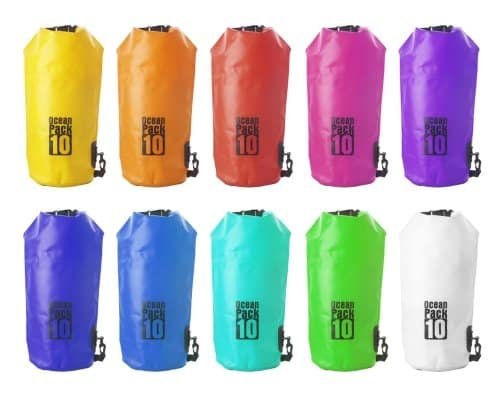
FAQ
Q1: What materials are commonly used for high-quality dry bags?
A: High-quality dry bags are typically made from materials like PVC, TPU, or nylon with a waterproof coating. These materials provide durability and water resistance essential for outdoor activities.
Q2: How does the sealing mechanism in dry bags ensure water resistance?
A: Dry bags usually employ roll-top closures or waterproof zippers. Roll-tops must be folded down several times and buckled, creating an airtight, watertight seal. Waterproof zippers, while less common, offer convenience without compromising on protection.
Q3: Can dry bags be used for activities other than water sports?
A: Absolutely! While they are ideal for water-based activities like kayaking or canoeing, dry bags are versatile enough for camping, hiking, and even urban commuting, protecting contents from rain or accidental spills.
Q4: Are there any limitations to what I can store in a dry bag?
A: Dry bags are great for clothing, electronics, and other items that need to stay dry. However, they are not suitable for sharp objects without proper padding and may not provide enough cushioning for extremely fragile items.
Q5: How do I choose the right size of a dry bag for my needs?
A: Consider the type and amount of gear you’ll carry. Smaller bags (5-10 liters) are good for personal items, while larger ones (20-30 liters or more) are better for camping gear or clothing. Assess your specific needs and activities to choose the right size.
Q6: Can I submerge my dry bag underwater without damaging its contents?
A: While dry bags are designed to be highly water-resistant, prolonged submersion may lead to leaks. They’re perfect for protecting against rain, splashes, or brief dips, but they’re not intended for extended underwater use.
Conclusion
In conclusion, this comprehensive examination of dry bags highlights their multifaceted nature. We’ve seen their design versatility, sealing efficiency, diverse usage, and vital considerations. These insights should empower readers to make informed decisions, ensuring they select the right dry bag for their needs. Remember, while dry bags offer significant benefits, understanding their limitations is crucial for optimal use. This exploration aims to guide and educate, fostering a deeper appreciation for these practical and indispensable outdoor accessories.

